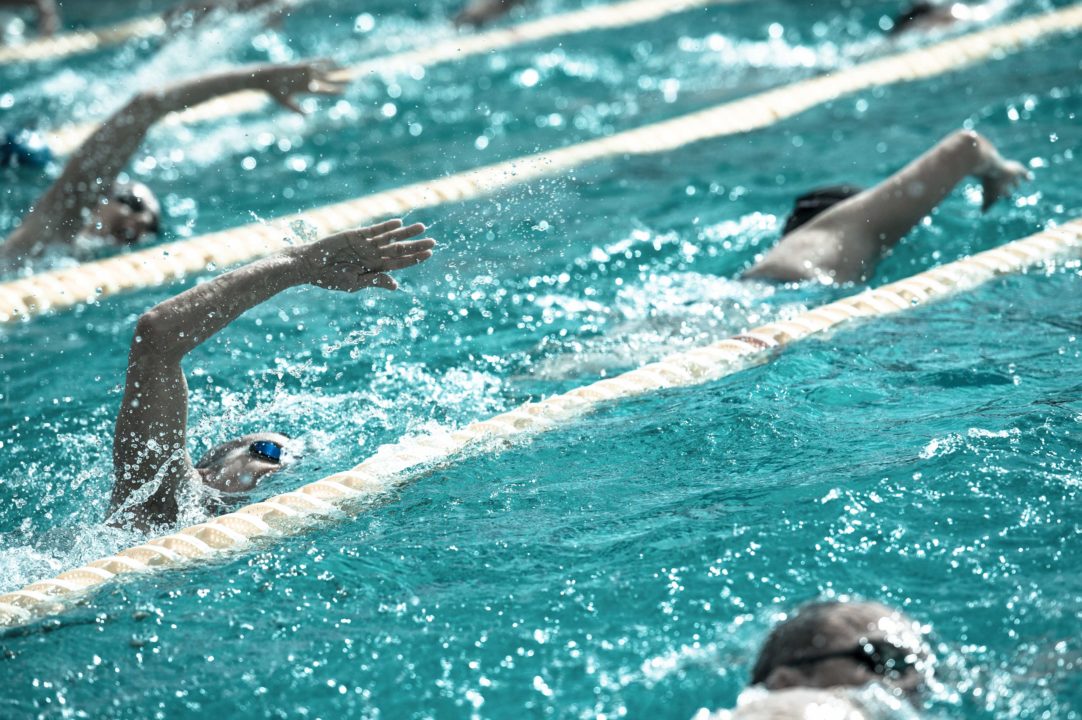Chances are that you will swim outdoors at some point this summer. Whether you swim under the sun every day at practice or catch some rays at one meet in the next few months, protecting your skin is critical to your health now and in the long term. Let’s discuss sun exposure and how it relates to you.
1. Not too Much, and not too Little Sunshine
Everyone needs a threshold level of sun exposure to maintain sufficient Vitamin D levels in the body. That threshold is estimated to be around 15 minutes outdoors on a mildly sunny day (time varies slightly with skin tone). This will allow UV-B rays to hit the skin and trigger a reaction in the skin cells that produces Vitamin D. During summer, this is less of a concern than in winter.
On the other hand, and more importantly, outdoor training puts swimmers at risk of developing acute sunburns as well as accumulated over-exposure. UV light hits your body from every direction in the water because it gets reflected off the bottom of the pool and on the surface of the water. The workouts won’t get any shorter, so put a generous amount of sunscreen on at least 15 minutes before hopping in the pool. Any sunscreen around SPF 30 will be sufficient. The key to sunscreen has less to do with the SPF value and more to do with reapplying it throughout the day. If you are at an outdoor meet with long prelims and finals sessions, be mindful to reapply sunscreen regularly (at least every two hours, more often preferably because it can wash off in the water).
2. Mind your Energy Levels
In addition to the physical toll a meet takes on your body, excessive sun exposure can leave you feeling zapped of energy, dehydrated, and even lightheaded. Stay in the shade as much as possible at meets, and when walking around deck wear a hat, UV protective sunglasses, and carry a water bottle. After a long day in the sun, you will need to rehydrate more so than usual.
3. Bad Burns vs. Accumulated Exposure
It is now known that skin cancer can originate from one bad burn in addition to developing from accumulated over-exposure to the sun. Before you start worrying about cancer, remember that family history, skin tone, and other factors like presence of moles play a role in your risk. In the summer, swimmers should just take note of how often they are in the sun, and be responsible about their sunscreen application. Because practices tend to be in the early morning or late afternoon, the strongest rays will not hit you then. Swim meets are the place to be particularly mindful, for your energy and your future health!
References:
1. http://www.skincancer.org/prevention/sunburn/facts-about-sunburn-and-skin-cancer

About BridgeAthletic
 BridgeAthletic works with elite professional, collegiate, and club swimming programs to provide a turnkey solution for dryland training. Led by Nick Folker, the top swimming strength and conditioning coach in the world, our team builds stroke-specific, custom-optimized dryland programs for each of our clients. The individualized workouts are delivered directly to athletes via our state of the art technology platform and mobile applications. Check Nick and BridgeAthletic out as recently featured in SwimSwam.
BridgeAthletic works with elite professional, collegiate, and club swimming programs to provide a turnkey solution for dryland training. Led by Nick Folker, the top swimming strength and conditioning coach in the world, our team builds stroke-specific, custom-optimized dryland programs for each of our clients. The individualized workouts are delivered directly to athletes via our state of the art technology platform and mobile applications. Check Nick and BridgeAthletic out as recently featured in SwimSwam.
 Nick Folker is the Co-Founder and Director of Elite Performance at BridgeAthletic. Nick’s roster of athletes includes 35 Olympians winning 22 Olympic Medals, 7 team NCAA Championships and over 170 individual and relay NCAA championships. Megan Fischer-Colbrie works as the Sports Science Editor at BridgeAthletic. Megan was a four-year varsity swimmer at Stanford, where she recently graduated with a degree in Human Biology. The Championship Series by BridgeAthletic is designed to empower athletes with tips from the pros that will help them reach peak performance come race day. We will be covering competition-focused topics such as nutrition, recovery, stretching, and mental preparation.
Nick Folker is the Co-Founder and Director of Elite Performance at BridgeAthletic. Nick’s roster of athletes includes 35 Olympians winning 22 Olympic Medals, 7 team NCAA Championships and over 170 individual and relay NCAA championships. Megan Fischer-Colbrie works as the Sports Science Editor at BridgeAthletic. Megan was a four-year varsity swimmer at Stanford, where she recently graduated with a degree in Human Biology. The Championship Series by BridgeAthletic is designed to empower athletes with tips from the pros that will help them reach peak performance come race day. We will be covering competition-focused topics such as nutrition, recovery, stretching, and mental preparation.
Follow BridgeAthletic on Twitter here.
Like BridgeAthletic on Facebook here.
Courtesy of BridgeAthletic, a SwimSwam partner.
